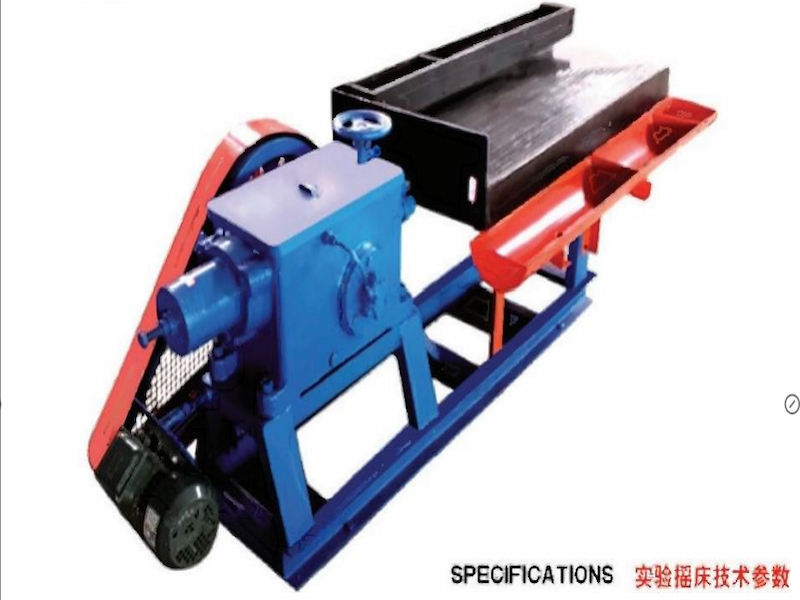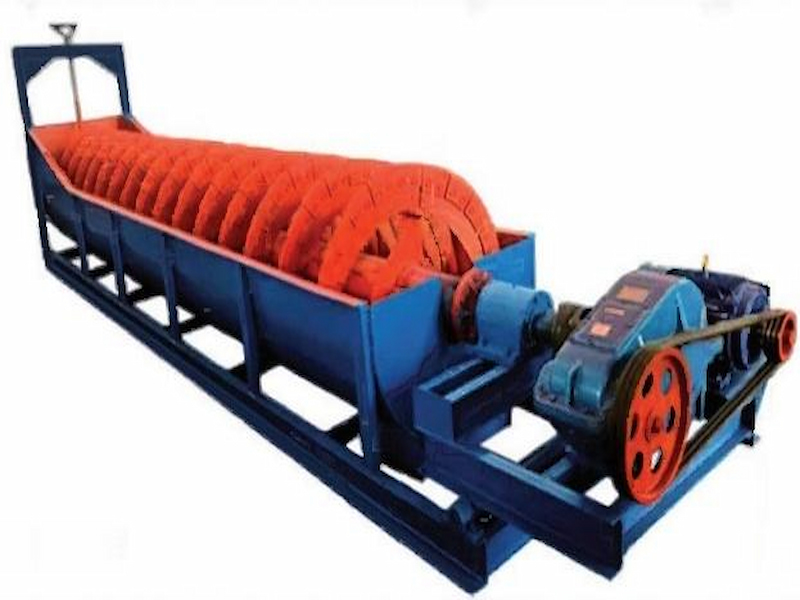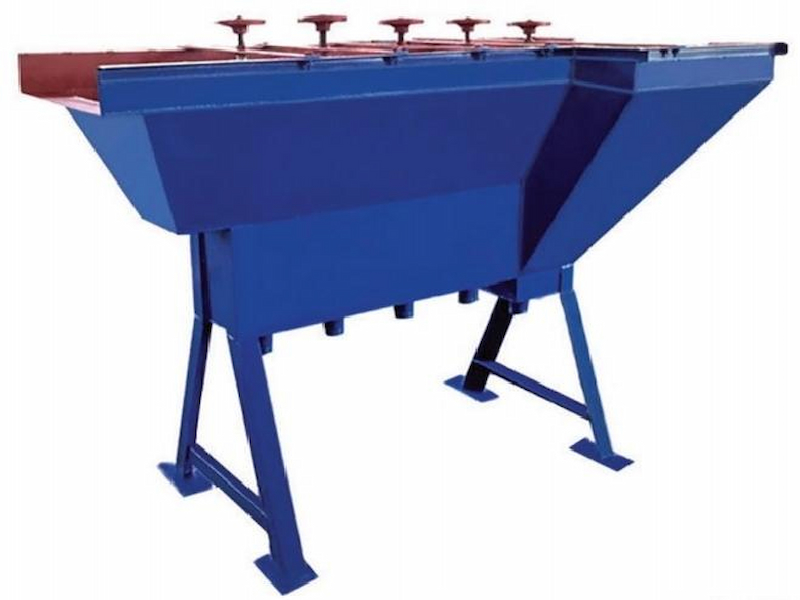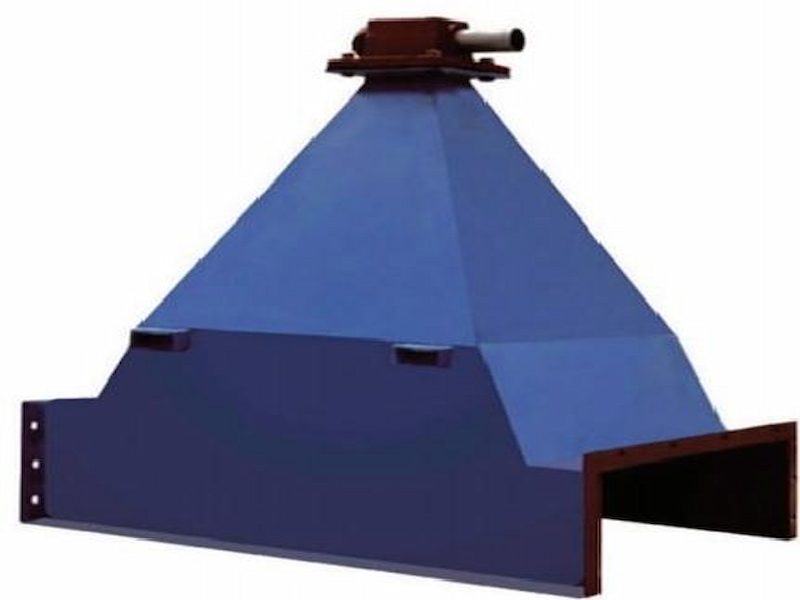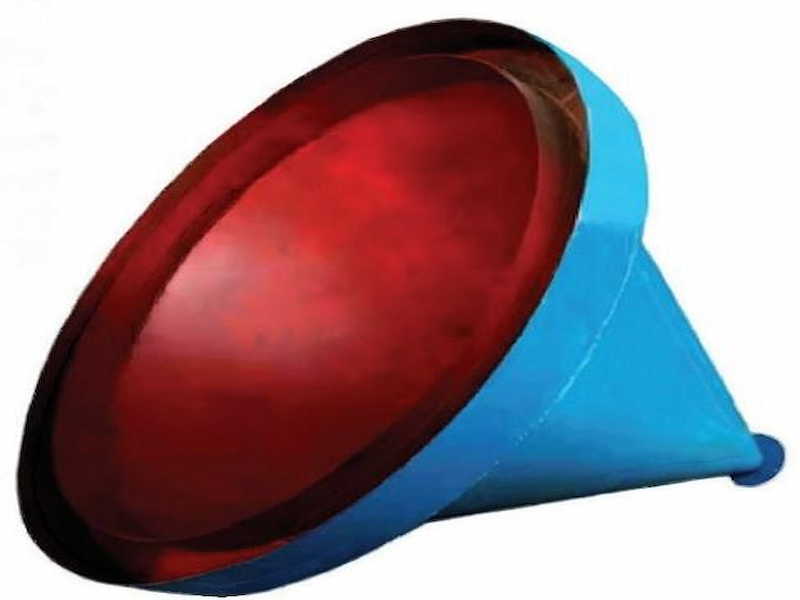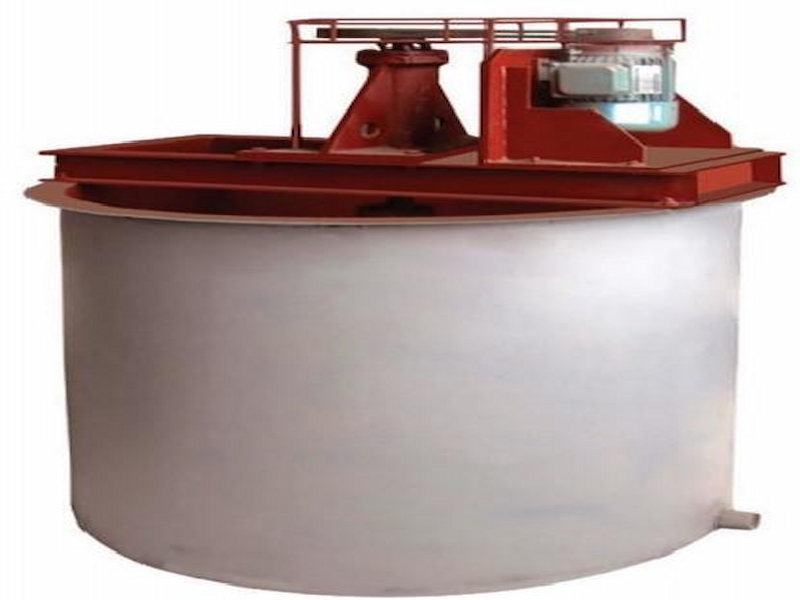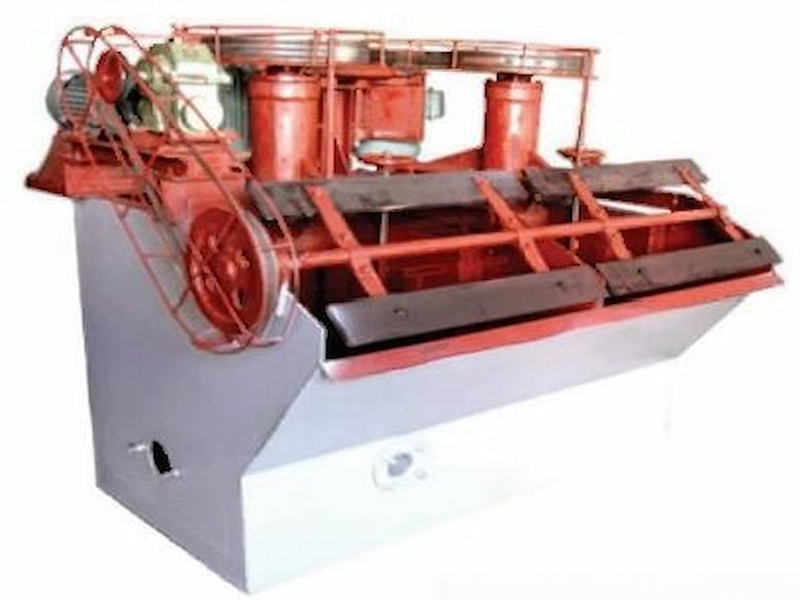CATHAY experimental shaker: reciprocating flow separation, benchmark equipment for laboratory mineral fine classification
1. Composite force field separation to achieve precise mineral separation
CATHAY experimental shaker achieves mineral separation based on the synergistic effect of bed reciprocating motion and lateral water flow. The core consists of an inclined bed (inclination 1°-5°), a transmission mechanism and a water supply system. The slurry (concentration 15%-40%) enters from the middle of the bed feed end, and the transmission mechanism drives the bed to perform asymmetric reciprocating motion (stroke 5-20mm, stroke 200-600 times/minute), so that the mineral particles move forward along the length direction of the bed (longitudinal); at the same time, the lateral water flow flows evenly from the upper end of the bed, so that the mineral particles spread along the width direction of the bed (lateral). Under the combined action of longitudinal inertia, lateral water flow and bed friction, mineral particles of different densities and particle sizes form a fan-shaped distribution zone: high-density coarse-grained ore is located on the inner side of the lower end of the bed (concentrate area), high-density fine-grained ore is located on the outer side of the lower end of the bed (middle ore area), and low-density ore particles are distributed on the upper end of the bed (tailing area), which are collected separately through the receiving trough to complete the sorting. The sorting accuracy can reach more than 90%, and it can effectively separate minerals with a density difference of ≥0.2g/cm³ and a particle size of 0.074-2mm, providing accurate data for mineral processing technology research.
2. Multi-ore adaptation, covering the entire mining experiment scene
Heavy non-ferrous metal ore sorting: For lead-zinc ore, copper ore, tin ore, etc., efficient separation of different minerals can be achieved. In the lead-zinc ore separation experiment, by adjusting the stroke (10-15mm) and the number of strokes (300-400 times/minute), the lead minerals (density 7.4-7.6g/cm³) are concentrated in the concentrate area due to their high density and coarse particle size, the zinc minerals (density 4.0-4.5g/cm³) are distributed in the middle mining area, and the gangue minerals (density 2.6-2.8g/cm³) are discharged with the tailings. The lead grade of the concentrate can reach more than 60%, and the lead grade of the tailings is reduced to less than 0.3%, which clearly reflects the separation characteristics of the minerals.
Rare metal ore purification: suitable for the selection experiments of rare metal ores such as tungsten ore, tantalum-niobium ore, and rare earth ore. In the wolframite sorting experiment, the use of collectors (such as fatty acids) to enhance the hydrophobicity of the mineral and adjust the lateral water flow intensity (0.5-1.5L/min) can enrich wolframite (density 7.1-7.5g/cm³) in the concentrate area, and the purity is increased to more than 85%, providing an experimental basis for the efficient utilization of rare metal resources.
Precious metal ore recovery: used for the recovery experiment of precious metal ores such as placer gold and platinum. In the placer gold sorting experiment, by reducing the stroke (5-8mm) and the number of strokes (200-300 times/minute), the water flow rate is reduced, and the fine gold particles (density 19.3g/cm³) are deposited in the concentrate area, the recovery rate can reach more than 95%, and the gold content of the tailings is less than 0.1g/t, providing key parameters for the optimization of the beneficiation process of precious metal ores.
Non-metallic ore classification: For non-metallic ores such as quartz sand, feldspar, and mica, dual classification of particle size and density can be achieved. In the quartz sand purification experiment, by adjusting the bed inclination (2°-3°), high-density quartz sand (density 2.65g/cm³) and low-density feldspar (density 2.55g/cm³) are separated, and the purity of quartz sand concentrate reaches more than 99%, meeting the high-quality requirements of raw materials in industries such as glass and photovoltaics.
Mineral processing process verification: It can simulate the sorting effect of industrial shaking tables and verify the influence of different reagent systems and slurry concentrations on sorting indicators. For example, the effect of new adjusting agents on iron ore sorting is tested, and the applicability of reagents is evaluated through indicators such as concentrate grade and recovery rate. The parameter stability of the experimental shaking table (error ≤2%) ensures the reliability of the test results.
3. Performance advantages to ensure accurate and reliable experimental data
Accurate parameter adjustment: The servo motor drives the transmission mechanism, the stroke adjustment accuracy is 0.1mm, the stroke adjustment accuracy is ±5 times/minute, the bed inclination is adjusted by a precision screw (accuracy 0.1°), and the lateral water supply is controlled by a rotor flowmeter (accuracy ±5%). Each parameter can be adjusted independently, and can accurately simulate different sorting conditions to ensure the repeatability and comparability of experimental data. The recovery rate deviation of multiple experiments on the same ore sample is ≤3%.
The sorting belt is clear and controllable: the bed surface is made of special wear-resistant material (such as fiberglass or polyurethane), and the surface is engraved with fine lines (groove depth 0.5-2mm), which enhances the carrying capacity of mineral particles and makes the boundaries of the sorting belts of different minerals clear, which is convenient for observation and sampling. The partition of concentrate, middlings and tailings can be fine-tuned by the position of the baffle to adapt to the sorting characteristics of different ore samples and ensure that the target minerals are fully recovered.
Convenient and efficient operation: equipped with a 7-inch touch screen control system, 10 sets of commonly used parameter schemes can be preset (such as "placer gold sorting" and "lead-zinc ore sorting"), and the experiment can be started with one-click call, reducing manual adjustment time. There is a lighting device under the bed surface to clearly observe the distribution of the sorting belt; the ore receiving trough adopts a drawer-type design, which is convenient for sampling, and a single batch experiment (including loading, sorting, and cleaning) can be controlled within 1 hour.
Visualization and dataization: Supports connecting cameras to record the formation process of the sorting belt in real time, and can quantify parameters such as the width of the sorting belt and the distribution density of minerals with the data analysis software. The equipment has a built-in data acquisition module to automatically record operating parameters such as stroke, number of strokes, and water supply, which is convenient for experimental data traceability and report generation, and improves scientific research efficiency.
4. Structural design, taking into account experimental adaptability and durability
Miniaturization and multi-function: The bed size (length × width) has a variety of specifications such as 500×300mm, 800×500mm, etc., to meet different processing volume requirements (single processing of 0.1-5kg of mineral samples), and the equipment occupies an area of only 0.5-1.5㎡, which is suitable for compact laboratory space. Supports two sorting modes: dry and wet. Wet sorting is suitable for conventional mineral samples, and dry sorting (needs to cooperate with wind power system) is suitable for minerals that are easily soluble in water.
Wear and corrosion resistance: The bed surface is made of imported polyurethane material (hardness Shore A85-90), with a smooth and wear-resistant surface and a service life of more than 5,000 hours; the parts in contact with the slurry (such as the ore receiving trough and the ore feeding pipe) are made of 316 stainless steel or PVC, which is resistant to acid and alkali corrosion (can withstand slurry of pH2-12), and can meet the sorting needs of ore samples of different properties.
Stability and safety: The base of the equipment is made of cast iron, with a low center of gravity, and the vibration amplitude is ≤0.1mm during operation to ensure the smooth movement of the bed surface; it is equipped with overload protection and leakage protection devices, and the transmission mechanism is equipped with a protective cover to ensure the safety of operators; the noise is less than 60 decibels, which meets the requirements of laboratory environment.
Easy to clean and maintain: The bed surface can be disassembled and cleaned as a whole to avoid cross-contamination of different ore samples; the transmission mechanism adopts a sealed design to reduce dust entry and reduce maintenance frequency; key components (such as servo motors and bearings) are imported brands to ensure long-term stable operation, with an average failure-free time of ≥1,000 hours.
5. CATHAY brand guarantee, full-cycle service support
Each experimental shaker is tested for standard ore samples (such as GBW07267 tin ore standard material) before leaving the factory to ensure that the sorting accuracy and parameter stability meet the standards. The professional technical team provides customized services - according to the experimental needs, a slurry preheating system (temperature 20-80℃ adjustable), an automatic ore feeding device, or a customized bed surface of special materials (such as anti-static materials) can be installed; on-site installation and commissioning, operation training and experimental program design guidance are provided to assist scientific researchers to quickly master the skills of using the equipment. 7×24 hours after-sales hotline response, core components (servo motors, control systems) are guaranteed for 2 years, and wearing parts (seals, drive belts) are in sufficient stock to ensure long-term and efficient operation of the equipment.
From university research laboratories to mining enterprise R&D centers, CATHAY experimental shakers have become the core equipment for mineral sorting experiments with their precise parameter control, clear sorting effects, and convenient operation experience, helping to deeply study the mechanism of mineral sorting, optimize mineral processing technology, and promote mining technology progress and efficient resource utilization.

Table parameters
|
名称
Name
|
床面尺寸(mm) Bed surface size
|
给矿粒度
(mm)
Granularity
|
给矿量
(t/h) Orefeed
|
给矿浓度
(%)
Potency
|
功率 ( kw) Power
|
传动机构
Transmission mechanism
|
重量 (kg) Weight
|
|
长度
|
传动端宽
|
精矿端宽
|
|
6S-1
|
1100
|
500
|
430
|
0.5
|
0.1-0.5
|
25-30
|
0.55
|
偏心连杆机构
|
150
|
|
6S-2
|
2100
|
1000
|
800
|
1
|
0.2-1
|
25-30
|
0.75
|
350
|
|
6S-3
|
3000
|
1500
|
1300
|
1
|
0.3-1.5
|
20-25
|
1.1
|
550
|





